I haven't provided detailed commentary on the US labour market for a while now. To…
The Australian labour market enters a slow decline – with employment and participation falling
The Australian Bureau of Statistics (ABS) released of the latest labour force data today (December 15, 2022) – Labour Force, Australia – for December 2022. My overall assessment is that the labour market started to enter a decline – albeit slowly in December 2022 with employment falling by 14,600 (-0.1 per cent) although full-time continued to grow but was outstripped by the decline in part-time employment. The participation rate fell 0.2 points, which meant the fall in the labour force reduced the rise in unemployment that occurred as a result of the employment decline. However, the underlying (‘What-if’) unemployment rate is closer to 5.4 per cent rather than the official rate of 3.5 per cent, which indicates the labour market still has slack. There are still 1,361.7 thousand Australian workers without work in one way or another (officially unemployed or underemployed).
The summary ABS Labour Force (seasonally adjusted) estimates for December 2022 are:
- Employment fell by 14,600 (-0.1 per cent) – full-time employment increased by 17,600 and part-time employment decreased by 32,200.
- Unemployment rose 5,800 to 499,800 persons.
- The official unemployment rate remained at 3.5 per cent.
- The participation rate fell 0.2 points to 66.6 per cent.
- The employment-population ratio fell 0.2 points to 64.3 per cent.
- Aggregate monthly hours fell by 9 million hours (-0.5 per cent).
- Underemployment rose by 0.2 points to 6.1 per cent (a rise of 32.1 thousand). Overall there are 862.9 thousand underemployed workers. The total labour underutilisation rate (unemployment plus underemployment) rose 0.3 points 9.6 per cent. There were a total of 1,361.7 thousand workers either unemployed or underemployed.
In its – Media Release – the ABS noted that:
Seasonally adjusted employment decreased by 15,000 people (0.1 per cent) in December 2022, following an increase of 58,000 people in November and average monthly growth of around 40,000 people between August and November 2022 …
Even though hours worked grew during 2022, there continued to be more people than usual working reduced hours due to illness.
In December, we saw the number of people working reduced hours due to illness increasing by 86,000 to 606,000, which is over 50 per cent higher than we would usually see at this time of the year …
Conclusion: employment growth is declining slowly and the fall in participation means unemployment is not rising significantly.
The slack is showing up outside the official labour force in the form of hidden unemployment and inside by rising underemployment.
Employment fell by 14,600 (-0.1 per cent) in December 2022
1. Full-time employment increased by 17,600 and part-time employment decreased by 32,200.
2. The employment-population ratio fell 0.2 points to 64.3 per cent.
3. Employment in Australia is 759.9 thousand (net) jobs (5.9 per cent) above the pre-pandemic level in February 2020.
The following graph shows the month by month growth in full-time (blue columns), part-time (grey columns) and total employment (green line) for the 24 months to December 2022 using seasonally adjusted data.
I took out the observations from September to December 2021 – they were outliers due to the Covid wave at that time.
The following table provides an accounting summary of the labour market performance over the last six months to provide a longer perspective that cuts through the monthly variability and provides a better assessment of the trends.
Given the variation in the labour force estimates, it is sometimes useful to examine the Employment-to-Population ratio (%) because the underlying population estimates (denominator) are less cyclical and subject to variation than the labour force estimates. This is an alternative measure of the robustness of activity to the unemployment rate, which is sensitive to those labour force swings.
The following graph shows the Employment-to-Population ratio, since January 2008 (that is, since the GFC).
The ratio ratio fell 0.2 points to 64.3 per cent in December 2022.
For perspective, the following graph shows the average monthly employment change for the calendar years from 1980 to 2022 (to date).
1. The average employment change over 2020 was -8.8 thousand which rose to 36 thousand in 2021 as the lockdowns eased.
3. For 2022, the average monthly change was 37.7 thousand.
The following graph shows the average monthly changes in Full-time and Part-time employment (lower panel) in thousands since 1980.
Hours worked fell by 9 million hours (-0.5 per cent) in December 2022
The following graph shows the monthly growth (in per cent) over the last 24 months.
The dark linear line is a simple regression trend of the monthly change (skewed upwards by the couple of outlier results).
The reality is that there hasn’t been much growth in hours worked over the last 6 months.
Actual and Trend Employment
The Australian labour market is now larger than it was in February 2020 and employment is now close to returning to the pre-pandemic trend.
But it is still below where it would have been had the trend been maintained.
The following graph shows total employment (blue line) and what employment would have been if it had continued to grow according to the average growth rate between 2015 and April 2020.
In December 2022, the gap increased by 40.1 thousand to just 80.5 thousand jobs.
The Population Slowdown – the ‘What-if’ unemployment analysis
The following graph shows Australia’s working age population (Over 15 year olds) from January 2015 to December 2022. The dotted line is the projected growth had the pre-pandemic trend continued.
The difference between the lines is the decline in the working age population that followed the Covid restrictions on immigration.
The civilian population is 368.7 thousand less in December 2022 than it would have been had pre-Covid trends continued.
The following graph shows the evolution of the actual unemployment rate since January 1980 to December 2022 and the dotted line is the ‘What-if’ rate, which is calculated by assuming the most recent peak participation rate (recorded at November 2022 = 66.8 per cent), the extrapolated working age population (based on growth rate between 2015 and February 2020) and the actual employment since February 2020.
It shows what the unemployment rate would have been given the actual employment growth had the working age population trajectory followed the past trends.
In this blog post – External border closures in Australia reduced the unemployment rate by around 2.7 points (April 28, 2022), I provided detailed analysis of how I calculated the ‘What-if’ unemployment rate.
So instead of an unemployment rate of 3.5 per cent, the rate would have been 5.4 per cent in December 2022, given the employment performance since the pandemic.
This finding puts a rather different slant to what has been happening since the onset of the pandemic.
Unemployment rose by 5,800 thousand to 499,800 persons in December 2022
Unemployment rose because the net fall in employment (-14,600) outstripped the fall in the labour force (-8,800 thousand), the latter arising from a 0.2 points decline in the participation rate.
That means the slack was pushed outside the official labour force estimates which meant the official unemployment rate was largely unchanged even though the hidden unemployment rate rose.
Also so bear in mind the ‘What-if’ analysis above and see the impact of the fall in participation below.
The following graph shows the national unemployment rate from January 1980 to December 2022. The longer time-series helps frame some perspective to what is happening at present.
Broad labour underutilisation rose 0.3 points to 9.6 per cent in December 2022
1. Underemployment rose by 0.2 points to 6.1 per cent (a rise of 32.1 thousand).
2. Overall there are 862.9 thousand underemployed workers.
3. The total labour underutilisation rate (unemployment plus underemployment) rose 0.3 points 9.6 per cent.
4. There were a total of 1,361.7 thousand workers either unemployed or underemployed.
The following graph plots the seasonally-adjusted underemployment rate in Australia from April 1980 to the December 2022 (blue line) and the broad underutilisation rate over the same period (green line).
The difference between the two lines is the unemployment rate.
Teenage labour market deteriorated in December 2022
The following Table shows the distribution of net employment creation in the last month and the last 12 months by full-time/part-time status and age/gender category (15-19 year olds and the rest).
To put the teenage employment situation in a scale context (relative to their size in the population) the following graph shows the Employment-Population ratios for males, females and total 15-19 year olds since June 2008.
You can interpret this graph as depicting the change in employment relative to the underlying population of each cohort.
In terms of the recent dynamics:
1. The male ratio rose by 0.3 points over the month.
2. The female ratio fell by 2 points.
3. The overall teenage employment-population ratio fell by 0.8 points over the month.
4. This reversed the recent trend that has seen female teenagers enjoying better outcomes relative to male teenagers.
Conclusion
My standard monthly warning: we always have to be careful interpreting month to month movements given the way the Labour Force Survey is constructed and implemented.
My overall assessment is:
1. The labour market started to enter a decline – albeit slowly in December 2022 with employment falling by 14,600 (-0.1 per cent) although full-time continued to grow but was outstripped by the decline in part-time employment.
2. The participation rate fell 0.2 points, which meant the fall in the labour force reduced the rise in unemployment that occurred as a result of the employment decline.
3. However, the underlying (‘What-if’) unemployment rate is closer to 5.4 per cent rather than the official rate of 3.5 per cent, which indicates the labour market still has slack.
4. There are still 1,361.7 thousand Australian workers without work in one way or another (officially unemployed or underemployed).
That is enough for today!
(c) Copyright 2023 William Mitchell. All Rights Reserved.
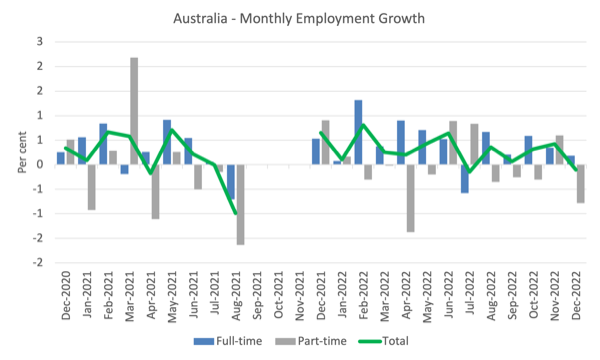
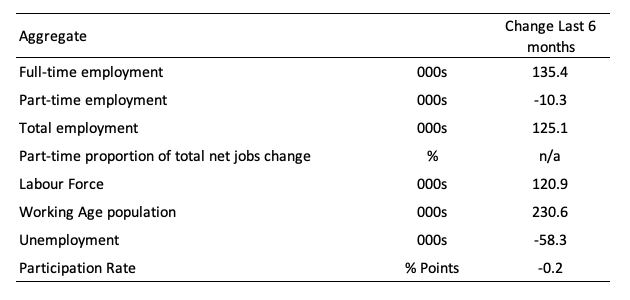
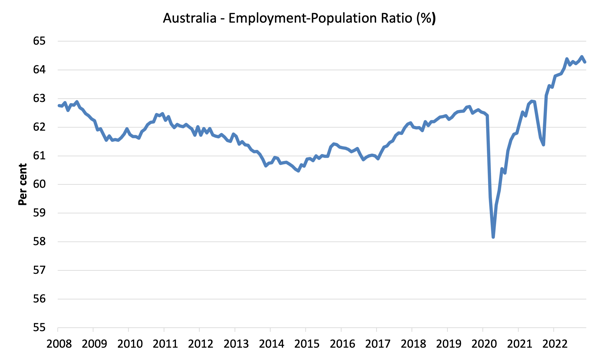
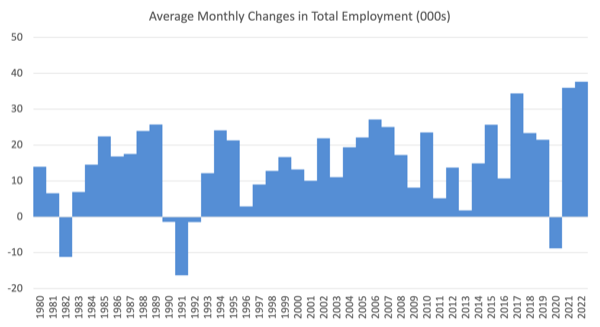
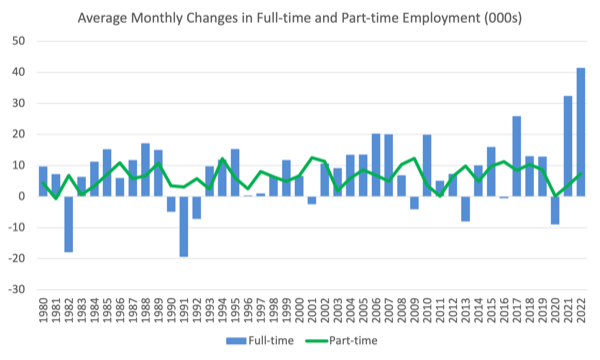
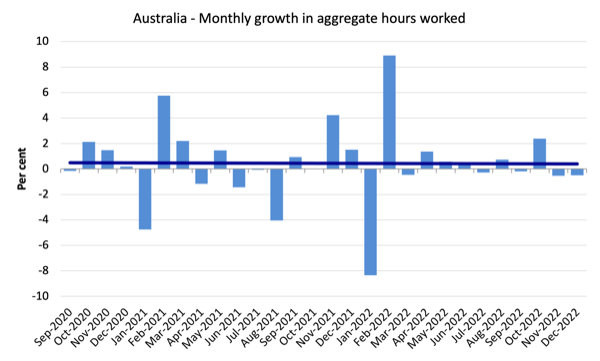
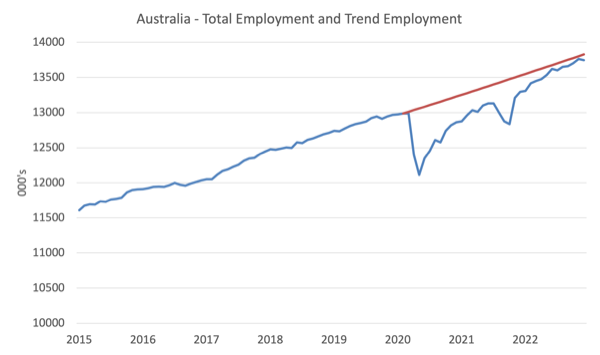
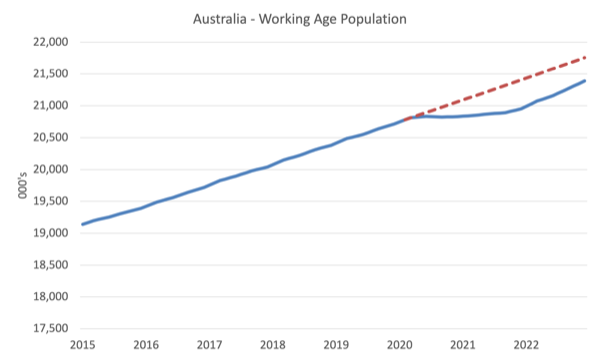
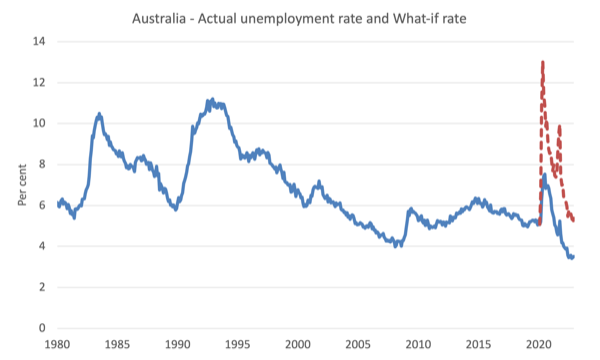
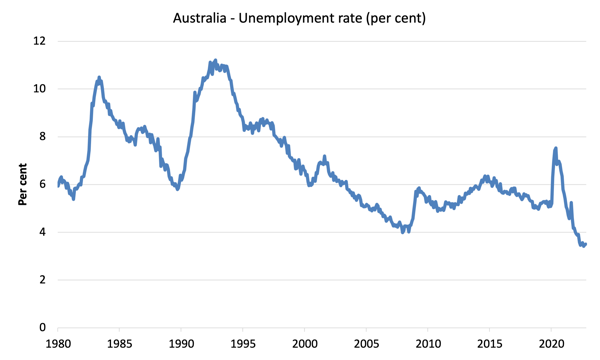
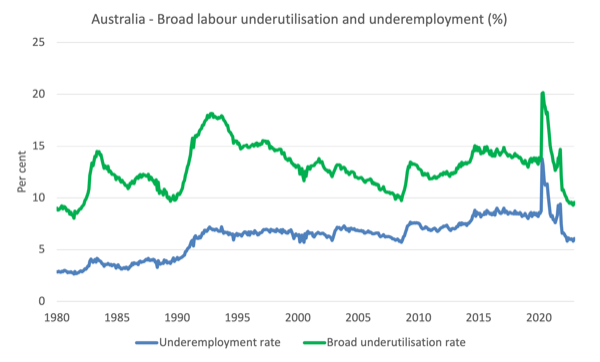

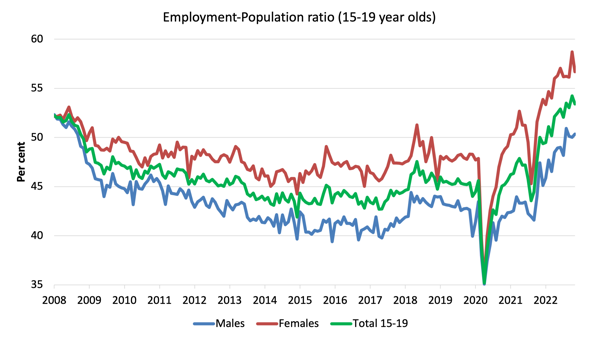
You’d have to be either stupid or just plain evil to force another interest rate hike on the Australian public when we have over 1.3 million people unemployed.